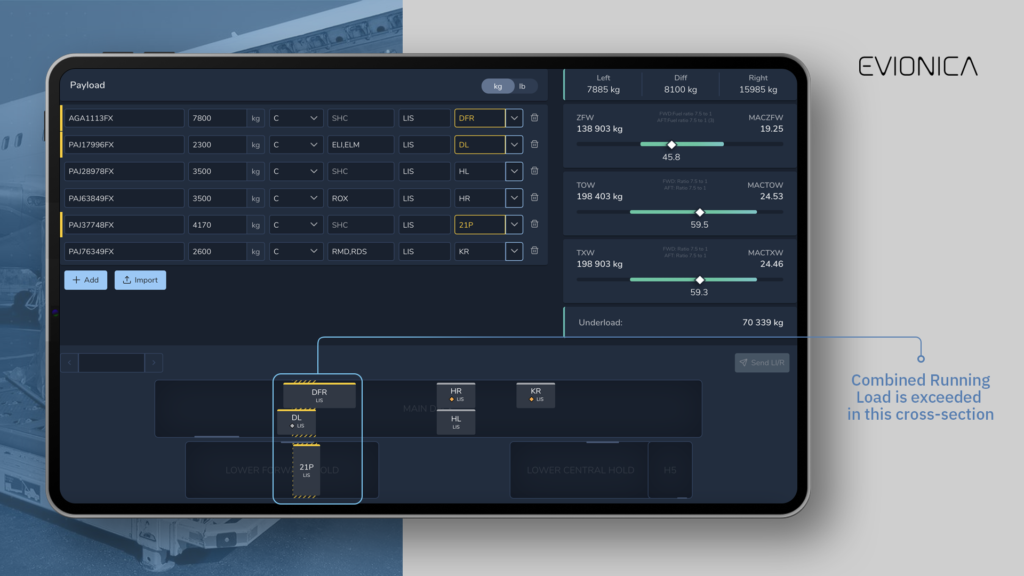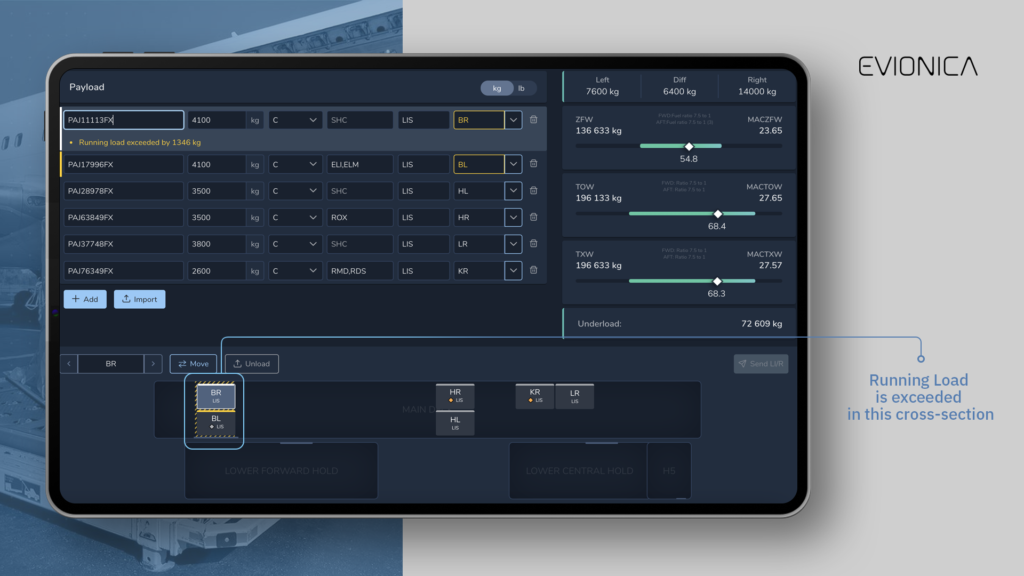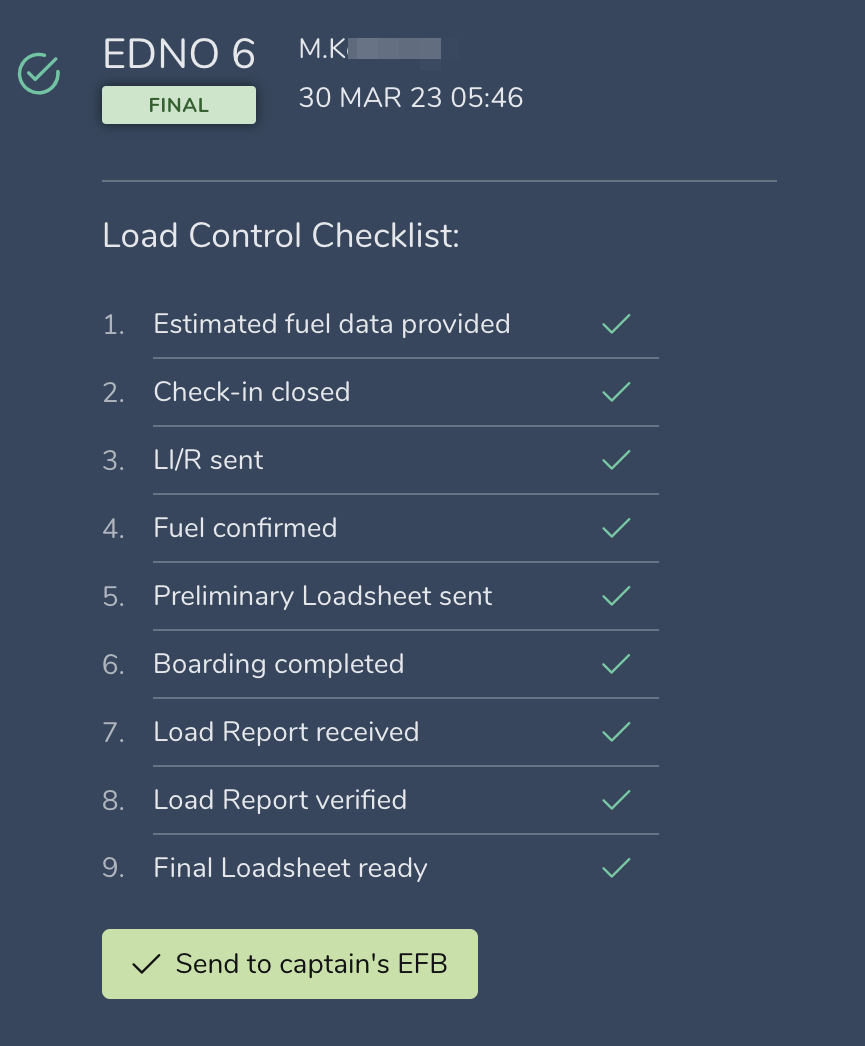Structural Limitations: Maximum Running Loads

Running load is a limitation that prevents floor damage.
It is given as kilogram per meter, kilogram per inch, or pound per inch. And 62 kg/in limit means that if we cut the aircraft fuselage in slices (the width of each is 1 inch) the total mass loaded in the slice cannot exceed 62 kg. The limit can be set differently in different areas of the aircraft. Usually, it is higher in the section over the wing and decreases in the AFT part of the aircraft.
How running load is validated in Evionica’s Weight and Balance solution?
Validates the maximum capacity of a given hold space, for example, the Main Deck Cabin of A321 P2F can accommodate a maximum of 59 525 lb of payload.
The solution can recognize the 3-letter code of the ULD and based on that it can deduce the longitudinal dimension. The mass is divided by that unit’s length to check the weight of each inch/ meter and then compared with the maximum allowed in the given area. The limitation is especially crucial for side-by-side loading as the running load will restrict not the single ULD weight but the total mass loaded on both left and right positions.
For the side-by-side loading, the mass of ULDs loaded on the Right and Left positions are summed up and the total is validated against the limit as they are both located at the same cross-section.

Combined Running Load
Running Load can be defined separately for Main Deck and Lower Deck, or as a Combined Limitation for both decks simultaneously. That means that the combined limitation applies to all ULDs loaded on the same cross-section including those on the Main Deck (Right position + Left Position) and the Lower Deck (Right position + Left Position) and the total is validated against the maximum value.


